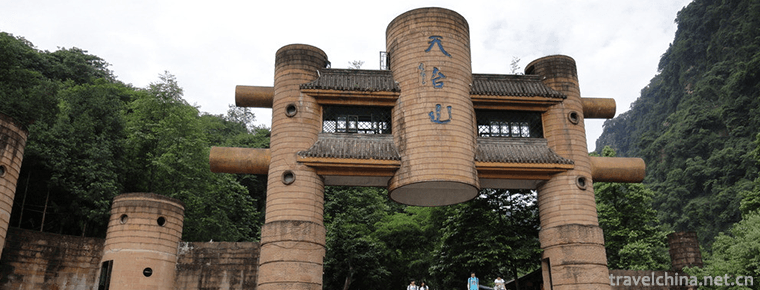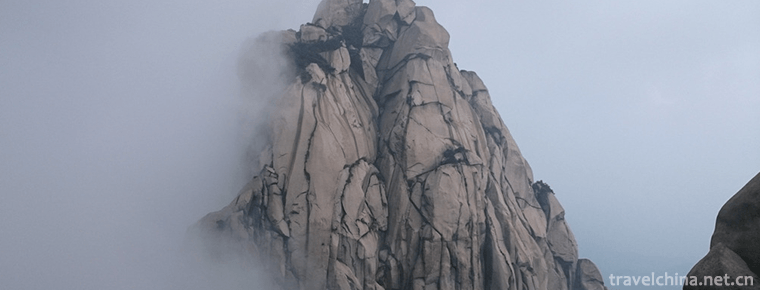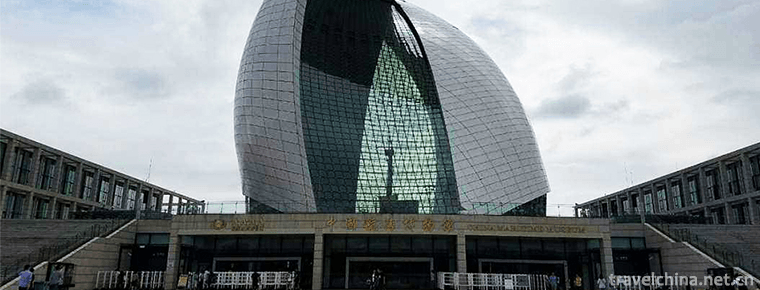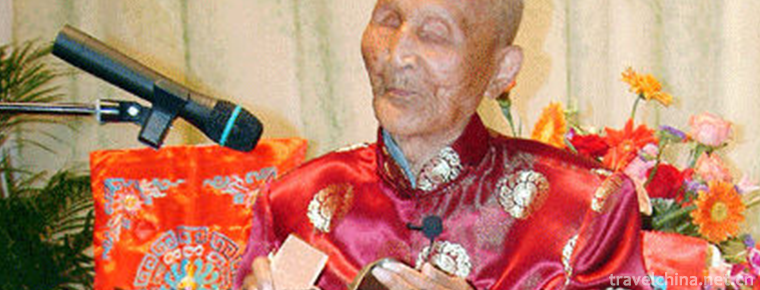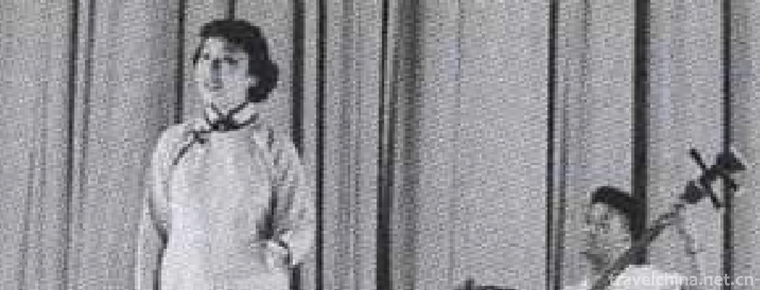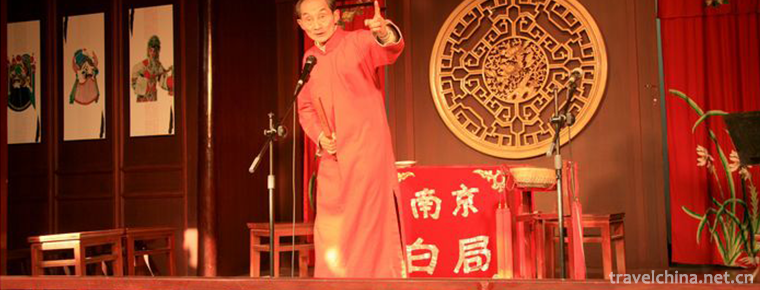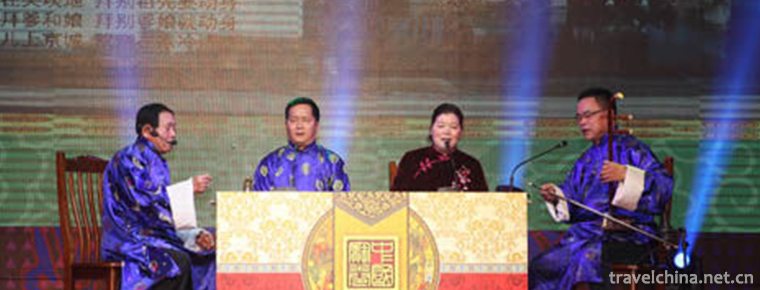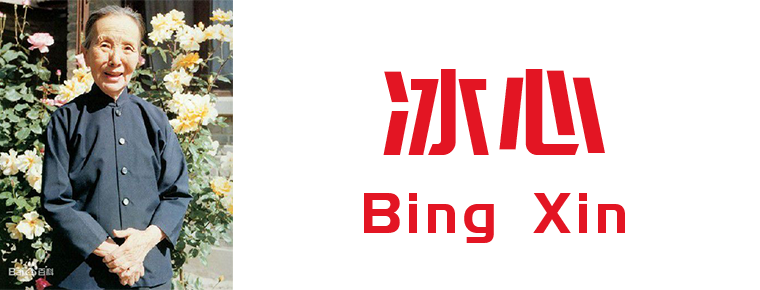Ulger
Ulger
Uliger, which means "storytelling" in Mongolian, is commonly known as "Mongolian Shushu", "Mongolian Shushu" and "Mongolian Qinshu". It is a form of music art that has developed greatly in Mongolian rap and singing art. It mainly spreads in Inner Mongolia Autonomous Region and neighboring areas of Heilongjiang, Jilin and Liaoning. In accordance with the living habits of the Mongolian people on the grassland, this art has a romantic and open atmosphere.
On May 20, 2006, the "Mongolian Uliger" jointly declared by Zalut Banner of Inner Mongolia Autonomous Region, Horqin Right-wing Central Banner, Fuxin Mongolian Autonomous County of Liaoning Province and Qianguoerros Mongolian Autonomous County of Jilin Province was listed in the first batch of national intangible cultural heritage list with the approval of the State Council.
historical origin
History
This form of art dates back to Genghis Khan's time. Most of the subjects in the early stage are mythological stories.
By the early Qing Dynasty. After the Manchu settled in the Central Plains, in order to prevent Mongolian and Han contacts, the "Wicker Edge" was built for thousands of miles. During Yongzheng period, the people of Hebei and Shandong suffered from drought for many years. They were not bored with life, and they felt sorrow all over the country. The Qing Dynasty had to propose to Zhuosuo Tumen Banner "to support the people by borrowing land", so a large number of Han people in the Yellow River Valley entered the Guandong Mongolian Banner. Immigrants bring about the Yellow River culture and promote the blending of Mongolian and Han cultures. This cultural phenomenon is called "the northward migration of the Yellow River culture". Jing Yun Dagu, storytelling, lotus flower fall into the prairie, and gradually blended with the "Tao Li" (dedicated to sing the heroic epic form of Art) with the accompaniment of Chao Er, drawing the essence of both sides, and evolved a form of Quyi, which has the characteristics of grassland.
At the end of the Qing Dynasty, some artists translated classical literary works such as Strange Tales from Liaozhai, Romance of the Three Kingdoms, Water Margin and Journey to the West into Mongolian rap and singing, which was very popular among farmers and herdsmen. After liberation, the artists adapted and sang contemporary literary works such as Lin Haixueyuan and Lei Feng's Story. The performers are male and sing by themselves (bass four-hu or Horsehead qin). Most of the music is based on Mongolian folk songs. There are more than 100 tunes, and each has its own specific use. In the process of development, Uliger has greatly improved the performance skills of the four-hu. Many artists can use the four-hu to simulate wind, horse neigh and other skills. Some performers can also make the singing melody and accompaniment melody form a contrastive polyphony relationship to enrich their expressive force.
Hulch
The artist of rap and singing Uliger is called Hulkie. The vast and distant grasslands create Hulkie's romantic and open artistic atmosphere. Like medieval bards in the West, Hulkie, with a four-stringed harp or Chaoer on his back, drifted in the wind on the prairie, wandering around, singing on his own. Because of their different performance style and story content, or graceful as poetry, or suspense, herdsmen are completely immersed in the story and forget where it is. Experienced Hulch can also improvise, as long as the title is given, it can be exported into chapters.
Origin
Zalut: The Sound of Hu Qin in the Town of Uliger
Zalut grassland is the cradle of Mongolian Uliger art. This magical land has created a brilliant national culture and art, and nurtured world-class national quyi master Pajie, Mao Yihan and other well-known artists at home and abroad. The translations of Uliger's speeches, such as Stories of the Spring and Autumn Period and the Warring States Period, Romance of the Three Kingdoms and Romance of the Feudal Gods, were born. The most famous heroic epics such as Gesarkhan and Pythagus Conquest have become the artistic treasures of the Chinese nation.
After the founding of New China, the art of storytelling in Zalut Banner has been developing continuously, and storytellers have gradually formed their own artistic styles. According to the singing characteristics of the storytellers and the relationship between teachers and apprentices, there are three main schools: the narrative and singing schools represented by Pajie, the Holebo and Zaner, and the traditional narrative and singing schools.
The deep cultural background of Zalut Banner has not only nurtured two renowned Chinese and foreign artists, Pajie and Mao Yihan, the world-class masters of folk art, but also trained many famous folk art artists, such as Chaobang, Zana, Dolgi, Sarenmandula and Chjigawa. In the 1950s, Pajie and Mao Yihan received cordially from Chairman Mao. In the 1960s, Rashiosr received three interviews with Premier Zhou.
Zalut Banner attaches great importance to the protection and excavation of national cultural heritage and the development and innovation of improving and perfecting national culture. In order to protect and carry forward the national folk art such as "Uliger" and "Haolaibao", the Banner Literary Federation has established the Quyi Artists Association. The Banner People's Government has also signed a contract with the Institute of Minority Languages of the Chinese Academy of Social Sciences to establish "Uliger" and "Haolaibao" heritage bases, recorded more than 500 hours of audio and video materials, and established a special web page, which laid a solid foundation for building the national art brands of "Uliger" and "Haolaibao" in Zalut Banner. At the same time, Zalut Banner also designated Mongolian experimental primary school as "Uliger Training Base". In March 2008, it opened "Uliger Special Class", purchased four-hu musical instruments, selected more than 10 students with music foundation as the first group of students, hired national second-class actor Rausl to teach, and often explained Uliger art to students.
In 2002, the 100th anniversary of Master Pajie's birth and the "Pajie Cup" National Uliger and Helebo Competition were held, which made positive contributions to the promotion of national culture and cultural innovation. From August 4 to 7, 2008, the "100th Anniversary of the Birthday of Mao Yihan, Mongolian Master of Quyi Art and the Wuliger Art Festival of Inner Mongolia" sponsored by the Chinese Quyi Artists Association, the Propaganda Department of Inner Mongolia Party Committee, the Inner Mongolian Wenlian Federation, the Inner Mongolian Cultural Office, the Inner Mongolian Radio and Television Bureau and the Inner Mongolian People's Committee was held in Zalute That's ok. More than 80 people from Mongolia, Japan, Canada and eight provinces and regions in China participated in the "Uliger Art Competition". Artists and professionals from home and abroad, such as Liu Lanfang, the chairman of the Chinese Opera Association, the famous book reviewer, the Secretary of the Party branch of the Chinese Opera Association, and Jiang Kun, the famous cross talk artist, were invited to participate in the "Uliger Art Competition". In order to carry forward the national folk opera has written a strong pen.
However, Uliger is still a popular art form among the herdsmen in Zalut grassland and an indispensable part of mass entertainment activities. From the birth of Uliger to 1986, more than 70 famous "Huerqi" (storyteller) appeared in the whole banner. Unfortunately, more than 30 people died in 2010. Up to now, there is a melodious and melodious sound of Huqin in the Zalut grassland. With its unique artistic style and superb singing skills, Uliger has become a wonderful flower in the hundred gardens of national art. In 2003, Zalut Banner was praised as "the home of Chinese folk art" and "the home of Chinese folk art".
Uliger: More than 200 years of inheritance and constant charm
According to historical records, Uliger was born in Kangxi period of the Qing Dynasty. It has been widely circulated in Kerqin grassland for more than 200 years. Singers hold four hu, compile, pull and sing by themselves. People call it "Huren Uliger" (La Four Hu Talk Book) and "Bensen Uliger" (Talking with scripts in hand). The Mongolian rap and singing art Huren Uliger is an important part of Mongolian folk art. For two centuries, it has attracted the attention of the domestic and foreign art circles and is popular with the Mongolian people because of its rich content, wide subject matter, exquisite language, strong grassland culture and distinct national characteristics. I like it. In the long process of history, through continuous evolution and development, Uliger not only strengthened his team, but also formed his own unique style and genre.
Before the founding of New China, there were more than 200 "Huerqi" (rap and singing artists) on the Horqin grassland, mainly active in the vast rural pastoral areas, and some became professional storytellers of Lama Temple or Wang Gong College. The storytelling focuses on Dalhan Palace, Tushyetu Palace, Wangye Temple, Zalut Banner Palace and other places. Mongolian rap artists mostly work among the working people to meet the cultural needs of the people. The main songs they sing are traditional ones and "Hao Lai Bao". Some disabled people, in order to survive, study hard the art of rap and singing, master the artistic characteristics, style and techniques of storytelling, and become storytellers.
Horqin Mongolian "Bensen Uliger" (script-telling) and "Huren Uliger" (La Sihu storytelling) have been performed by rap artists for a long time, continuously refined and processed, and gradually formed a relatively fixed version of rap. Artists such as Yao Jinshan, Gahetu Town, Zalut Banner, and other artists use scripts to rap "Bensen Uli". Geer is one of the typical representatives. Horqin Mongolian rap art, "Huren Uliger" has a considerable scale in Horqin grassland. According to relevant records, since the founding of New China until 1988, there were more than 600 rappers. A total of 308 biographies of storytellers were collected in the book Mongolian Huerqi. There were more than 300 performances, of which the stories of the Han, Tang and Song Dynasties were the most popular, and they were excellent ancient rappers, such as The Western Han Dynasty and The Romance of the Three Kingdoms. 》 "Stories of Sui and Tang Dynasty", "Water Margin", "A Dream of Red Mansions", "Journey to the West" and so on, these artistic practices have refined and improved the art of rap. From the aspects of literature, music and performance, they have formed their own unique norms and patterns, which laid the foundation for the development of rap art. Hu Ren Uliger began to record and broadcast at Tongliao People's Broadcasting Station in the early 1970s. Up to now, more than 300 programs have been recorded. In addition, through training courses and rap artists'clubs, there emerged many cultured Hurzi, such as Li Shuangxi, Rolls and other artists with university culture, Banbra, Burenbayar and other secondary vocational culture and professional titles.
In March 1983, in order to continuously promote the development of national folk art theory, the Zhelimu League Mass Art Museum (now Tongliao City) established the Ministry of Folk Art Research. In 1986, the Institute of Literature and Art of Zhelimu League (now Tongliao City) was set up to arrange special persons to study the art of Quyi and to guide the activities of rap artists. The creativity and talents of the artists were released unprecedentedly. They devoted all their efforts to the Narrative Folk Songs "Gadamelin", "Danabala", "Taoke Tahu" and "Zana Ba". Rajinima, Tumen Ulijida and Sang Greenqin were adapted into Huren Uliger, which contributed rich and colorful spiritual food for the masses of the people.
Inheritance and Protection
Uliger's celebrities include Baode, Ganzhuli, Burenbayar, Shuangxi and many other celebrities.
The Mongolian Quyi Uliger rap culture is extensive and profound, with a long history. With the passage of time, generation after generation of masters have left, and Uliger culture will soon be lost, resulting in the situation of "people die singing, people go out of art". However, it is gratifying that Robson and his Uliger's rap art are still "alive" and become the absolute singer of Uliger's art.
Mongolian rapper Dolgi Renqin is proficient in Uliger Robson's performance, creation, Geser's singing and creation, and constantly breaks through himself in his own field. He has a very high talent in the inheritance and development of Geser's art and has made a special contribution.
In view of his artistic achievements, on June 8, 2007, the Chinese Association of Folk Literators and Artists identified Robson as the "outstanding inheritor of Chinese folk culture". He was the only Uliger rapper who won the title in Inner Mongolia.
Inheritance Significance
For the vast majority of Mongolian people, Uliger is not only the main way and means of their cultural life, but also an important educational means for them to learn knowledge and cultivate spirit. In their minds, Uliger occupies a very important position.
Since the 1980s, many well-known artists have died one after another, and there is a serious shortage of new inheritance. In addition to the changes in lifestyle and the diversification of entertainment methods, the survival and development of Uliger's art tradition is facing a crisis. The performance is shrinking day by day, there is a lack of active positions, and the ranks of successors are scarce. Effective measures are urgently needed to support and protect them.
In 2006, Uliger Quyi was listed in the first national intangible cultural heritage list by the State Council.
Uliger: It is urgent to protect "the life of folk art is fragile. In the storm of market economy, some folk art shows the trend of accelerating its demise. As the most popular folk art among grassland people, Uliger's inheritors are rare nowadays. The task of rescuing Uliger is urgent and urgent. Talking about the inheritance and development of Uliger, Sanbrano Ribu, a national art critic and deputy director of Tongliao Institute of Literature and Art, said in an interview with reporters worried. Sanbrano Ribu has been involved in Mongolian rap art since 1980s. He has done a lot of research on Uliger art. He once wrote Horqin Quyi. He is also a visiting professor of Mongolian Language and Literature College of Inner Mongolia University for Nationalities. He guides students to study Uliger systematically in theory and practice. More than 100 students have been trained.
Sanbrano Zhibu said that after the 13th Plenary Session of the 13th Central Committee of the CPC in the 1970s, the national cultural and artistic undertakings of the Zhelimu League (now Tongliao City) have been flourishing and developing unprecedentedly under the guidance of the Party's literary and artistic policies. At the beginning of the 1990s, more than 400 Huerqi (storytellers) in the whole city, Zalut Banner, Kulun Banner, Kezuo Houqi Banner and other places have also established Mongolian Speakers'Library. Tongliao People's Broadcasting Station arranges two hours a day to broadcast Huren Wuliger, which enriches the cultural life of the Mongolian people, promotes the vigorous development of the art of rap and singing, and receives the vast number of people in rural pastoral areas. The welcome of the masses. But in the middle and late 1990s, especially in the last decade, with the wide spread of various new forms of culture and art and the arrival of the information age, the popularity of television and computer has brought great impact on the survival and development of folk art. As more and more people surf the Internet and watch TV, fewer and fewer people learn Uliger and rap Uliger. Especially young people are far away from Uliger, even some people don't know what Uliger is. By 2010, the city's storytellers are expected to have only 200 people left. Most of these folk artists live in remote areas and are old and frail. Uliger is in danger of losing his heritage with the death of the old artists.
To the satisfaction of Zambrano Zhibli, the state attaches great importance to the protection of intangible culture. In 2006, "Mongolian Uliger" was listed in the first batch of national intangible cultural heritage list with the approval of the State Council, and organized the implementation of a five-year protection plan. In 2004, Tongliao City formulated the implementation plan of national folk culture protection project. "Conservation Project" includes the precious and endangered folk traditional culture with historical, cultural and scientific value in Tongliao area. From 2004 to 2020, the "Protection Project" was organized and implemented in three stages, and entered the stage of comprehensive development and key protection.
Sanbrano Zhibu believes that with the development of the times, the change of natural environment and lifestyle and the influence of foreign cultures, the inheritance of Uliger is facing unprecedented challenges. The protection of Uliger is of great significance to the protection of Mongolian intangible cultural heritage, the promotion of the inheritance and promotion of Mongolian excellent traditional culture and art, and the maintenance of world cultural diversity. He suggested that governments at all levels should continue to strengthen the protection of intangible cultural heritage and increase investment in funds. Ethnic colleges and universities with conditions should innovate their working ideas, set up Uliger specialty, and systematically study Uliger art in theory and practice. In addition, minority primary and secondary schools in each county should actively learn from some advanced experience, set up art characteristic classes, train children to learn Uliger's hobbies and interests from an early age, and lay a "talent foundation" for the inheritance and development of Uliger.
We have reason to believe that under the protection of the government, the Mongolian folk art treasure Wuliger, which has been inherited for more than 200 years, will be immortal and will be handed down from generation to generation. (Wen/Hu Jinshan Demuqige)

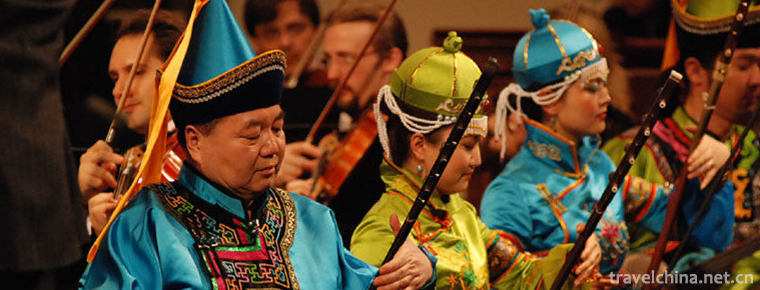
-
Tiantai Mountain Scenic Area
Tiantai Mountain Scenic Spot, National AAAAA Class Tourist Spot, National Key Scenic Spot, One of China's Top Ten Famous Mountains, National Eco-tourism Demonstration Zone, Zhejiang Top Ten Tourist Sp.
Views: 259 Time 2018-12-07 -
Mount Tianzhu Scenic Area
Tianzhu Mountain Scenic Spot, located in the west of Qianshan City, Anqing City, Anhui Province, is known as "the first mountain in the Yangtze River and Huaihe River" for its main peak.
Views: 118 Time 2018-12-08 -
China Maritime Museum
China Navigation Museum, fully known as "Shanghai China Navigation Museum", is the first national navigational Museum approved by the State Council. It is co-constructed by the Ministry of T.
Views: 117 Time 2018-12-22 -
Laosicheng Site
Laosicheng Site is located in Laosicheng Village, Lingxi Town, more than 20 kilometers east of Yongshun County, Tujia and Miao Autonomous Prefecture, western Hunan Province.
Views: 135 Time 2019-01-29 -
Sing the news
Singing news is a traditional local opera popular in eastern Zhejiang, especially in Fenghua, Beilun, Zhenhai, Yinzhou and Xiangshan. Singing news has a long history, about a hundred years ago.
Views: 201 Time 2019-04-16 -
Single string ziqu contains bifurcation
Single string ziqu, quyiqu. It is popular in Beijing, Tianjin, North China and Northeast China. During the reign of Guangxu in Qing Dynasty, folk artists compiled their own lyrics with octagonal drum .
Views: 238 Time 2019-04-25 -
Nanjing White Bureau
Nanjing Baiju is an ancient type of music in Nanjing area. The "Nanjing tune" in the Yuanqu brand is the original tune of Baiju's ancient tune. It has a history of more than 700 years. It wa.
Views: 108 Time 2019-06-07 -
Shaoxing Xuanjuan
Shaoxing Xuanjuan is a traditional rap art with religious color, which is mainly used to worship gods and pray for blessings. Since Tang Dynasty, it has developed into folk art in Qing Dynasty. The So.
Views: 184 Time 2019-06-14 -
Xinyang Folk Songs
Xinyang Folk Song is the traditional folk music of Xinyang City. Xinyang City, known as the hometown of song and dance in Henan Province, has a rich stock of traditional folk music, dance and other tr.
Views: 311 Time 2019-07-06 -
Bing Xin
Bing Xin (October 5, 1900 - February 28, 1999), female, formerly known as Xie Wanying, Changle, Fujian province (now Changle District, Fuzhou), China Association for democracy promotion ( China Associ.
Views: 159 Time 2019-09-06 -
Climate of Luzhou
Luzhou city belongs to subtropical humid climate zone, and the three-dimensional climate is obvious in the southern mountainous area. It has high temperature, sufficient sunshine, abundant rainfall, four distinct seasons, long frost free period, temperature, light and water in the same season.
Views: 373 Time 2020-12-14 -
Suining climate
Suining City is located in the Asian monsoon area, belonging to the subtropical humid monsoon climate in Sichuan Basin. It has a mild climate, abundant rainfall, four distinct seasons and a significant monsoon climate. The frost free period is long in winter and spring..
Views: 355 Time 2020-12-16
